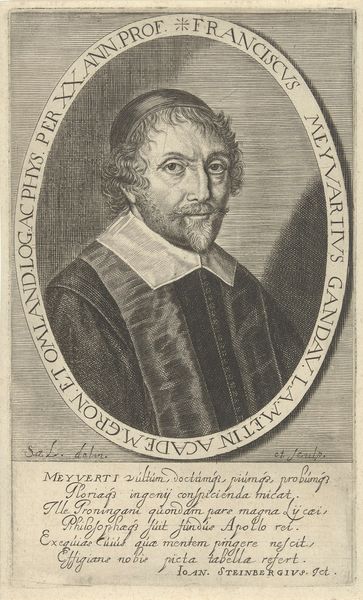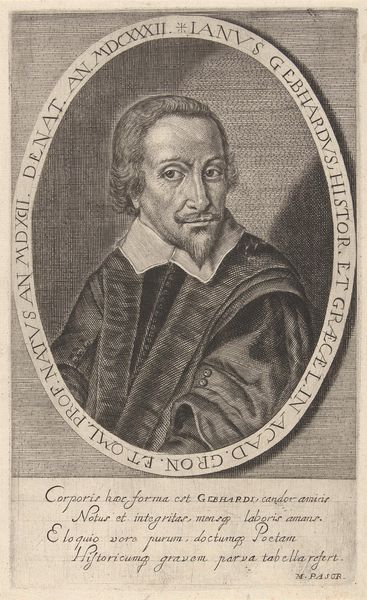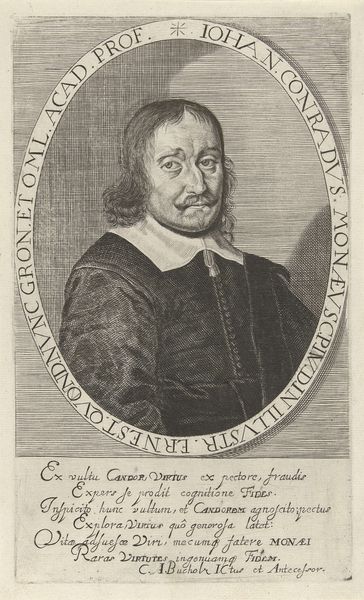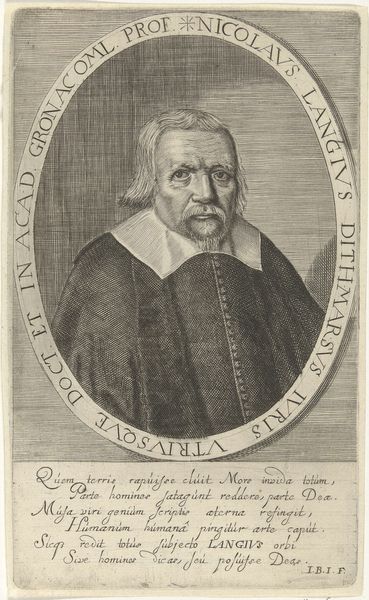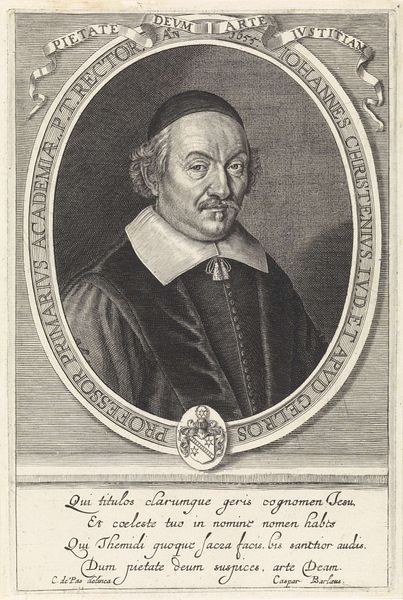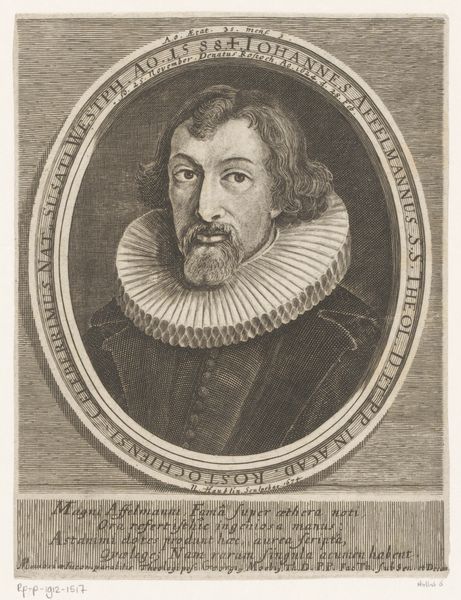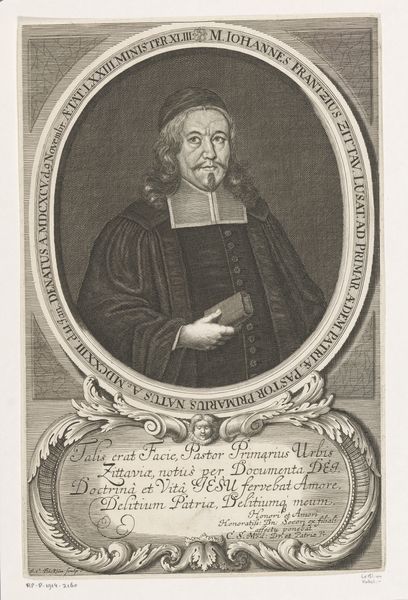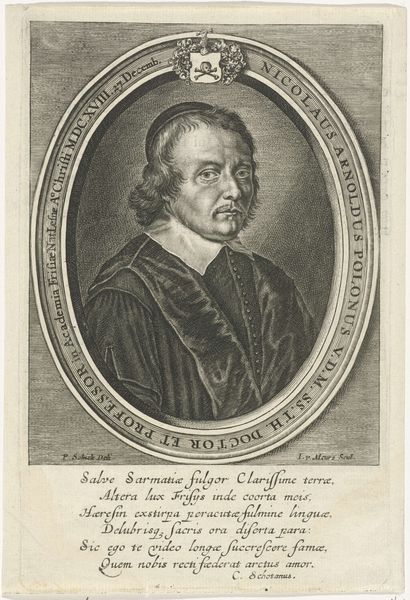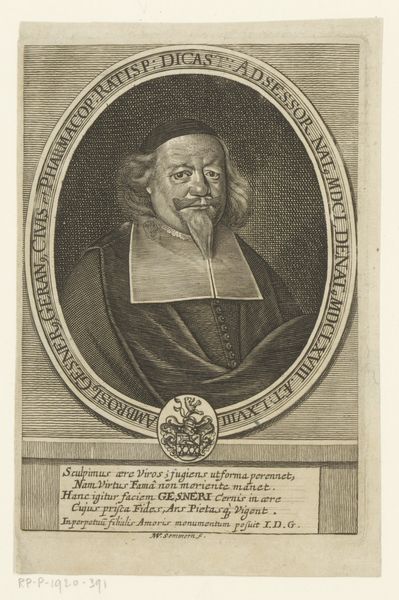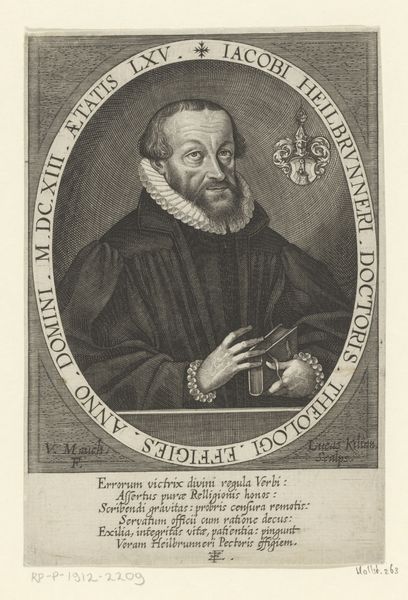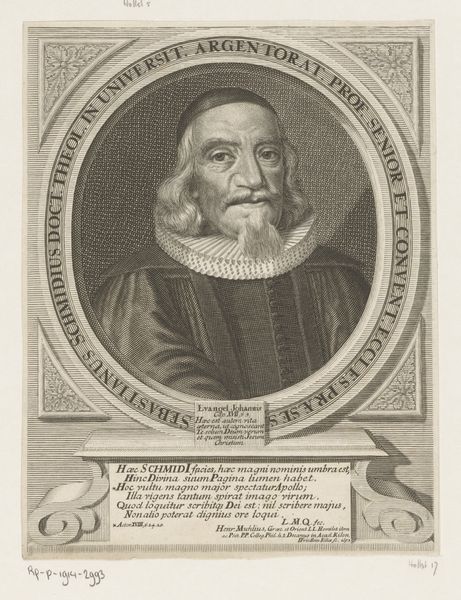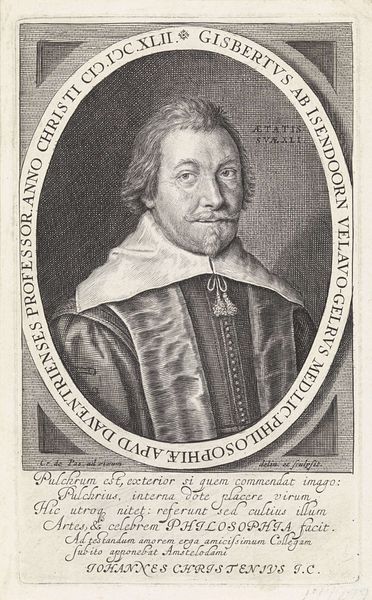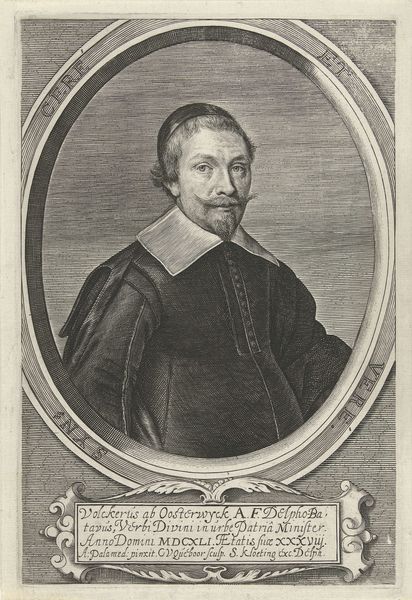
print, engraving
#
portrait
#
baroque
# print
#
history-painting
#
engraving
Dimensions: height 213 mm, width 130 mm
Copyright: Rijks Museum: Open Domain
Curator: This engraving is a portrait of Petrus Mulerius, dating back to 1654. It was created by Steven van Lamsweerde. The print beautifully exemplifies Baroque portraiture. Editor: It's quite striking. The stark contrast and circular frame really draws the eye. There’s an almost severe formality, yet the subject holds these delicate little flowers. The texture is interesting too, made richer by its grainy print. Curator: Van Lamsweerde, as a printmaker, engaged in a practice deeply intertwined with the socio-economic conditions of the time. Prints were often commissioned or produced to serve multiple functions such as, to record public figures and disseminate knowledge. Mulerius, the subject of the portrait, taught physics and botany – important considerations, and botany may explain why he is portrayed with flowers in hand. This was also around the time when the discipline of botany, which had not yet acquired disciplinary autonomy, would encompass also medicinal chemistry and pharmacology. The text framing the image provides additional information. Editor: It's clever how you link the blooms he holds to botany as a form of knowledge. Structurally, it's a classic portrait composition for the time; framed in an oval. The textures that define the costume, his features and the surrounding frame make it particularly visually complex, even given the limitations of engraving. And even if you don't consider its historical context, there is something enduring about the composition here; its arrangement still holds value. Curator: Indeed. Van Lamsweerde would have engaged various materials to produce the work - copper plates, inks, and paper. By observing this image and understanding how it served both cultural and economic purposes, we gain greater insight into the societal and economic realities of the 17th century. Editor: For me, the appeal lies in its aesthetic strength and compositional balance; this remains long after its intended historical use. It prompts thought on the enduring relevance of classical methods.
Comments
No comments
Be the first to comment and join the conversation on the ultimate creative platform.
